Oana Truica
A gold nanoparticle based light-sensitive drug delivery platform
Babes-Bolyai University // Cluj, Romania
Q&A Session I // Wednesday, October 28 // 6.15 pm – 7 pm (CET)

Polyelectrolyte microcapsules, PEMs, are known to be a good carrier for hydrophobic drugs [1]. However, in order to release the encapsulated drug, the microcapsule needs to be responsive to an external trigger. As shown previously, gold nanoparticles, AuNPs, have the capability to transform the light into heat [2], so, when loaded in the microcapsule wall they induce thermal damage and eventually drug release.
In this study, AuNPs loaded PEMs were synthesized with an average size of 868 nm. The PEMs laser-heat interaction was monitored using Raman mapping. The Raman maps generated provide very good spatial resolution and identification for the PEM capsules from the vibrational fingerprint of the polymers. This analysis technique proved valuable in detecting the PEMs in an in vitro setting. Also, using Raman mapping, changes in PEM’s wall structure were monitored after laser irradiation.
By testing different laser irradiation times, it is shown that laser exposure times as low as 0.2 seconds cause structural damage of the PEMs, and at 3s of laser irradiation the PEMs were completely disintegrated. These findings indicate that such a delivery platform would be a potentially successful strategy to deliver hydrophobic drugs to a localized target of interest.
References:
- Leopold, L.F., et al., Cellular Internalization of Beta-Carotene Loaded Polyelectrolyte Multilayer Capsules by Raman Mapping. Molecules (Basel, Switzerland), 2020. 25(7): p. 1477.
- Tódor, I.S., et al., Photothermal property assessment of gold nanoparticle assemblies obtained by hydroxylamine reduction. Colloid and Polymer Science, 2020: p. 1-9.










